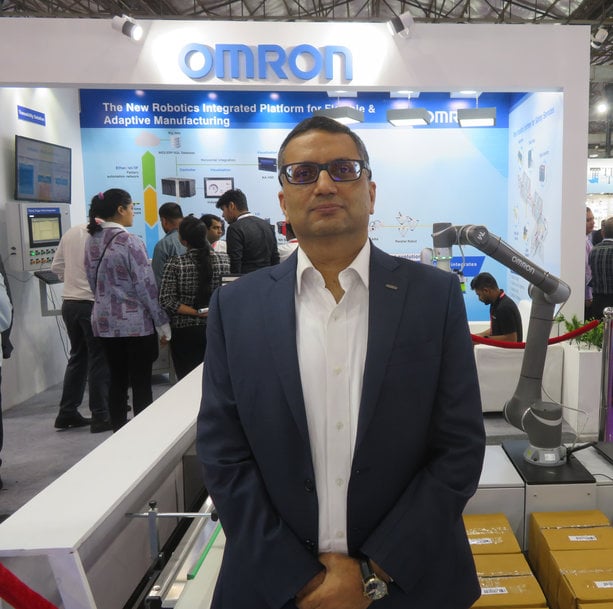www.ptreview.co.uk
03
'23
Written on Modified on
One of the most promising future trends in machine vision is AI
An Interview with Sameer Gandhi, Managing Director, OMRON Automation India.

Is this the end of manual vision or are there areas where it is still relevant.
Assuming that it is the end of manual inspection is not right but yes, we can say that we have succeeded to some extent depending on the application and the industry. For example, for the automotive industry, maybe we can say that the manual inspection is reduced by 90%; only the capital issue specific areas are being handled with manual inspection. Also the areas where inspection points are ergonomically complicated, manual inspection are needed.
Manual inspection as we all can imagine is more prone to compromises with quality and low production. Whereas with machine vision, we can increase production, achieve good quality and also realize traceability and tracking.
What are the most common and popular applications of machine vision in industry?
One of the most significant uses of machine vision is for the Traceability based applications. At OMRON, we use our vast experience in track, trace and control to help manufacturers in many industries like pharmaceutical and biomedical industries to build robust systems that ensure quality while boosting productivity. Our comprehensive line of machine vision hardware includes smart cameras and a variety of industrial cameras that are scalable across software platforms for basic to advanced toolsets. Whether one requires a compact form factor for tight spaces, high-speed imaging for fast-moving production lines, or high resolution for detailed inspection, OMRON has a machine vision solution to meet the needs.
It can become much more straightforward when broken down into the four concepts of “Mark, Verify, Read and Communicate.” Each part of MVRC represents a concrete requirement of any good traceability system, and each comes with its own set of challenges and strategies for overcoming them. OMRON believes in making traceability as intuitive and accessible as possible. This allows manufacturers to implement workable systems and adhere to the standards with relative ease. This is a fast-evolving field and many pioneering and exciting developments are happening. For instance, OMRON holds one of the world’s most extensive patent portfolios for machine vision technology, including hardware design; software algorithms and machine vision illumination so that we can make solid contribution to the traceability challenges of our customers.
How is the OMRON helping end users address their painpoints in applying solutions?
Impeccable quality control in production reduces costs and ensures a very high level of customer satisfaction. Especially, for life sciences and medical industries, it is very important for them to have 100% data integrity and extreme reliability in their production process with regards to traceability. With these in view, traceability and serialisation based on machine vision is increasingly becoming a part of the industrial automation solutions automating inspection and rendering smartness to industrial processes so that manufactures gain more integrity, speed, highest levels of performance and flexibility with minimal integration effort. OMRON’s value proposition is to provide a complete end-to-end solution to our customers. For instance, the medical and digital industries need product with complete integration with an existing set up or new set up. And because of our holistic capabilities, we are able to reduce thehassles of our customers by making them interface and deal with only one product and service provider.
What are the future trends in machine vision integration across devices?
One of the most promising future trends in machine vision is AI. It’s the deep learning technology helping customers to enhance the quality of a product. Even a micron size defect can be identified rendering inspection accuracy close to 100%. This technology is getting rapidly adopted by many industries such as automotive, pharma, digital to name just a few.
An example explaining the role of AI is the OCR reading on casting component. It’s very challenging to locate and read it however with the utilisation of AI, it’s now become very convenient. Similarly in pharma industry, the blister defect inspection after packing was almost impossible; however with the integration of AI with IR cameras, one can check even such defects after packing.
The digital market is seeing a great evolution in India. The country is becoming a global manufacturing hub for mobile handsets. With this, the market is becoming really demanding for the quality KPIs. There was a time when operators used to check the unsoldering defects manually which hampered the production and now with the introduction of AI, it’s become easy to catch the defect and achieve significant positive impact in the production. Being one of the very few suppliers having end-to-end capabilities, OMRON can make it very easy for manufacturers to integrate AI into their vision systems.
www.omron.com

